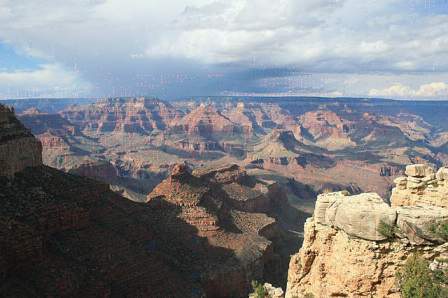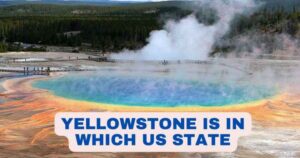Grand Canyon What State
- Grand Canyon is situated predominantly in the US state of Arizona.
The Grand Canyon stands as a testament to the incredible power of nature’s forces and the beauty that can emerge from them. Its geological history, diverse ecosystems, cultural significance, and impact on human imagination make it one of the most treasured natural wonders on Earth. Nestled predominantly in the state of Arizona, the Grand Canyon’s towering walls and timeless landscapes continue to captivate the hearts of all who have the privilege to witness its majesty. As we navigate the challenges of conservation and sustainable tourism, let us remember the importance of preserving this awe-inspiring masterpiece for generations to come.

The Grandeur of the Grand Canyon: A Deep Dive into Arizona’s Natural Marvel
The Grand Canyon, a name that evokes images of sheer vastness and breathtaking beauty, is one of the world’s most iconic natural wonders. Carved by the mighty Colorado River over millions of years, the Grand Canyon is a testament to the power of geological processes and the timeless beauty they can create. Located primarily in the state of Arizona, this awe-inspiring landscape has captured the hearts and imaginations of people from around the globe. In this blog, we embark on a journey into the heart of the Grand Canyon, exploring its geology, ecosystems, cultural significance, and the profound impact it has on all who experience its grandeur.
A Geological Masterpiece
At the heart of the Grand Canyon lies a geological story that stretches back in time for nearly two billion years. The layers of rock exposed in the canyon’s walls provide a window into Earth’s history, with each layer representing a different era. The most visible and iconic rock layers, including the Kaibab Limestone and the colorful Redwall Limestone, offer a visual record of the eons that shaped this remarkable landscape.
The Grand Canyon owes its formation to the relentless power of the Colorado River. Over millions of years, the river gradually eroded the rock layers, carving a chasm that stretches approximately 277 miles (446 kilometers) long, up to 18 miles (29 kilometers) wide, and over a mile (1.6 kilometers) deep. The process of erosion exposed the intricate rock formations, showcasing an array of colors, textures, and patterns that change as the sunlight shifts throughout the day.
Ecosystem Diversity
The Grand Canyon’s dramatic topography has resulted in a wide range of ecosystems that are representative of different elevations and microclimates. From the Colorado River’s edge to the lofty North Rim, the canyon hosts diverse habitats that support an incredible array of plant and animal life.
Starting from the river’s banks, riparian habitats flourish with cottonwood and willow trees, providing critical resources for various species of birds and mammals. As one ascends, the landscape transitions through desert scrub, ponderosa pine forests, and eventually reaches the cooler, higher elevation spruce-fir forests of the North Rim.
The Grand Canyon’s unique combination of ecosystems supports a rich biodiversity. Over 90 species of mammals, including mule deer, bighorn sheep, and elusive mountain lions, call the canyon home. Hundreds of bird species, from peregrine falcons to California condors, grace the skies above the abyss. The park’s vibrant flora includes desert wildflowers, ancient juniper trees, and delicate ferns nestled in hidden niches. This ecological diversity is a testament to the adaptability of life in the face of extreme conditions.
Cultural Significance
Beyond its geological and ecological wonders, the Grand Canyon holds profound cultural significance for various Indigenous communities and modern society alike. For thousands of years, the canyon’s rims and depths have been home to Native American tribes, including the Havasupai, Hopi, Navajo, and Paiute. These tribes have developed deep spiritual connections to the land, viewing the canyon as a sacred space that holds stories, traditions, and ancestral ties.
In addition to its Indigenous heritage, the Grand Canyon has played a significant role in shaping American conservation history. President Theodore Roosevelt, inspired by the canyon’s magnificence, declared it a national monument in 1908 and later pushed for its protection as a national park. The establishment of Grand Canyon National Park in 1919 marked a milestone in the preservation of natural wonders for future generations, contributing to the broader conservation movement in the United States.
Visitor Experience
Every year, millions of visitors from around the world make the pilgrimage to the Grand Canyon to witness its grandeur firsthand. Whether hiking down its trails, rafting along the Colorado River, or simply standing on the rim and gazing into the abyss, the experience is nothing short of transformative.
The park offers a variety of trails suited for all levels of hikers, each providing unique perspectives of the canyon’s beauty. The Bright Angel Trail and the South Kaibab Trail are among the most popular, leading adventurers into the depths of the canyon, where layers of rock reveal a tapestry of colors and textures.
For those seeking a different vantage point, the North Rim offers a quieter, cooler, and more remote experience. The views from Point Imperial and Cape Royal are especially breathtaking, showcasing the vastness of the canyon and the meandering course of the Colorado River.
Preservation and Sustainability
As the Grand Canyon continues to inspire and awe, preserving its delicate ecosystems and cultural heritage becomes paramount. The National Park Service, responsible for its management, focuses on striking a balance between accessibility and conservation. Sustainable tourism practices, education, and ongoing research are integral to ensuring that future generations can experience the Grand Canyon’s majesty.
Visitors are encouraged to adhere to Leave No Trace principles, respecting the park’s flora, fauna, and historical sites. Efforts to protect the park’s night skies from light pollution not only benefit stargazers but also contribute to the well-being of nocturnal wildlife.








